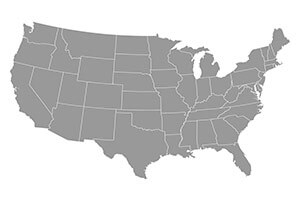
UNITED STATES
Honey crops will be up in the Midwest, according to many of our reporters this season. The big honey-producing states of North Dakota, South Dakota and Minnesota (which account for over 30% of our total U.S. honey crop) had rain and warm weather at the right times, so many beekeepers felt their crops would be near normal or better than normal. Honey crops in Florida will probably be up from last year’s poor yields, but will still not be normal. In addition, honey crops in California will still be down, but beekeepers are hoping to exceed last year’s extremely poor yield of only 8 million pounds. Montana will likely produce another honey crop of over 10 million pounds and Texas beekeepers will produce over 8 million pounds again. These seven top honey-producing states normally account for over half the honey produced each year in the U.S.
Unfortunately, wholesale honey prices and demand among larger honey packers continue to be down from last year. Buyers cite the stronger U.S. dollar and cheaper imported honey as the main reasons for the decline. On the other hand, small-lot wholesale buying and retail sales continue to be normal to strong around the country. Some beekeepers are switching to more honey packing to combat lower large-lot wholesale prices, but this does take more time and money to make the switch.
Early indications are that demand for colonies for California almond pollination will again be strong, despite a decline in world almond prices.
NORTHEAST
As this was written, many beekeepers had removed and extracted their honey crops for the season. In addition, they were treating for varroa mites before colder weather began. On the other hand, other beekeepers were placing their bets for a nice goldenrod, aster, knotweed or knapweed flow this late summer and early fall and then treating for mites later. This is always risky, but for some the rewards of these sometimes excellent late flows are worth it. Central New York beekeepers said that drought lowered some of their normal spring and early summer honey crops from traditional sources like clover, basswood, wildflowers and buckwheat. Late summer flow prospects were in question if rains did not come to the rescue to stimulate late wildflower bloom.
August weather was often hot and humid, interspersed with occasional showers. Bees did not have many remaining nectar sources, so were often seen bearded on the fronts of hives just trying to keep cool. Earlier in the season, some beekeepers made excellent spring honey crops from wildflowers, black locust, berries and clover. This honey is selling quickly at farmers’ markets, fairs and festivals. Very little honey is bulk marketed, but some small lots of several barrels or buckets are often sold to small packers, bakers, etc. Beekeepers selling small lots like this have not noticed the declines in wholesale pricing that we have seen in other parts of the country for large-lot sales.
MIDEAST
August continued to be hot and humid with scattered showers. Some locations remained on the dry side, while beekeepers in other locations complained of too much rain. Earlier spring honey flows were fair to good. Bees continued to work scattered clover, alfalfa, sumac, basswood and sourwood flows in the mountains, but they were quickly drawing to a close. Meanwhile, late summer and fall flowers including goldenrod, smartweed, Spanish needles, aster, knotweed, loosestrife and milkweed were providing honey for winter stores and in some cases an extra super of honey where beekeepers had placed their bees near large non-farmed fields or along riverbeds. Beekeepers were hoping that tropical storms or hurricanes would not be a problem for their areas this fall.
Beekeepers have been busy treating for varroa mites, as well as being on the lookout for small hive beetle infestations. This year’s honey is being bottled and seems to be selling as quickly as it is available. Local honey is quite popular in this area, and very little of it usually gets sold out of the area. Prices remain good since few producers in this area sell large bulk amounts of honey that would be competing with cheaper foreign honey.
SOUTHEAST
Beekeepers were cautiously optimistic about remaining flows for the season from cotton and fall wildflowers in Alabama, Georgia and Mississippi. In Florida, beekeepers were hoping for a good Brazilian pepper crop, but locations were getting crowded. In addition, goldenrod, Partridge pea, asters, and other fall flowers may provide additional stores for winter. Unfortunately, in a number of locations reporters told us that once the spring and early summer flows quit, they were forced to start feeding many of their outyards. Beekeepers not pursuing subsequent surplus honey flows were treating for varroa mites before their mite populations became too high. Small hive beetles also remain an ever present threat in this area. One wild card is the tropical storm and hurricane season since these major weather events can have dire consequences for both people and their property in the Southeast. Specifically, rains and stormy weather can hurt remaining honey flows or, on the other hand, can sometimes help them, depending on when they come and their severity. For example, as this report was written, tropical storm Hermine was bearing down on Florida and points north.
Honey crops in most southeastern states ranged from 75 to 120% of last season, depending on the weather and colony strength. Beekeepers have been busy bottling and selling their crops in local markets. Business has been brisk for local and varietal honeys at the retail level. Unfortunately, the same cannot be said for wholesale bulk offerings of new crop honey which has been encountering increasing competition from cheaper foreign honey. This has often …


